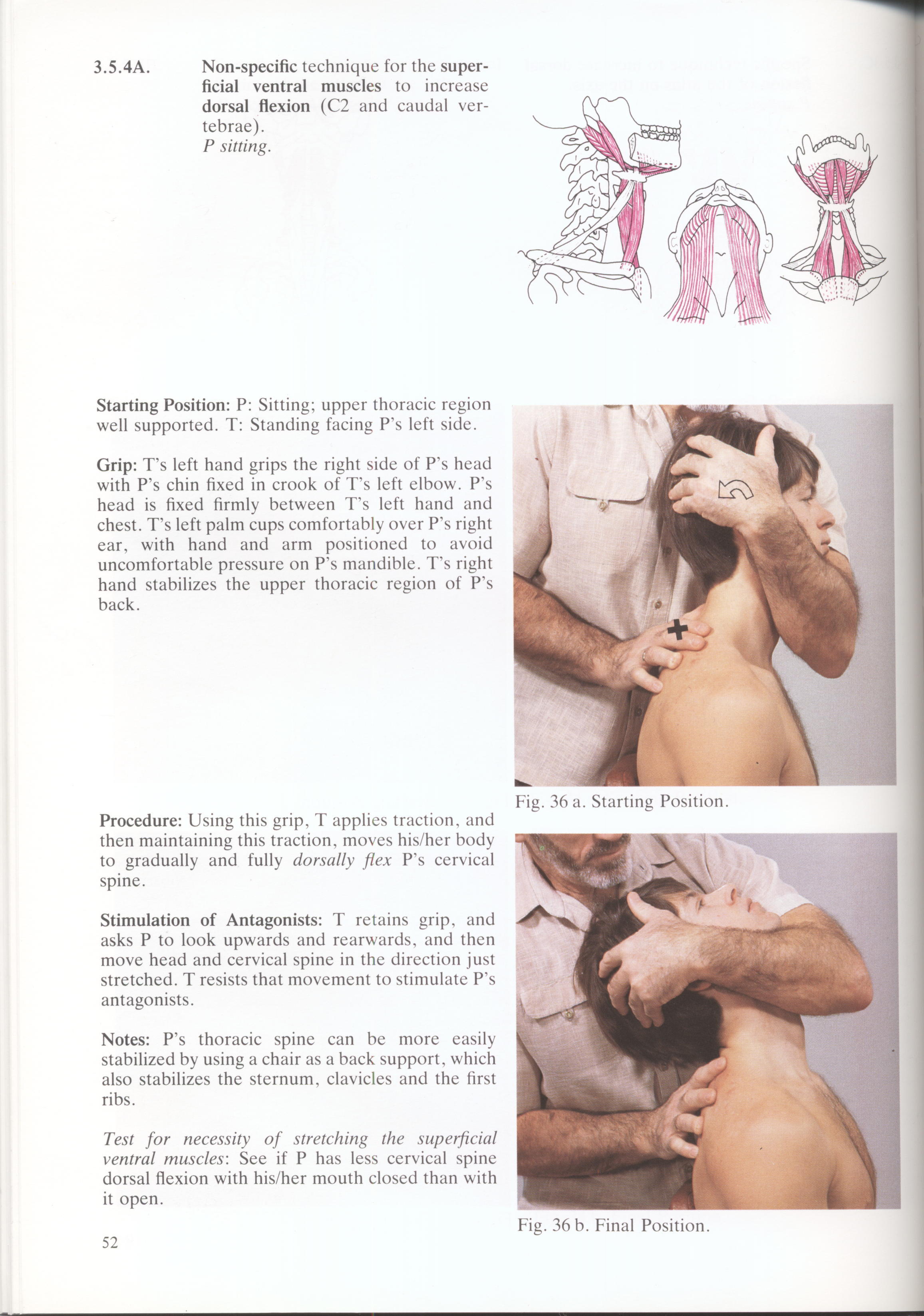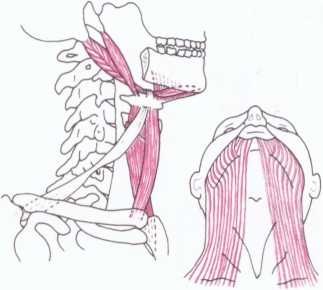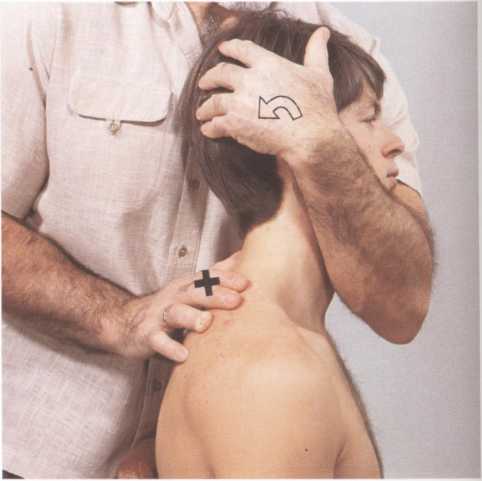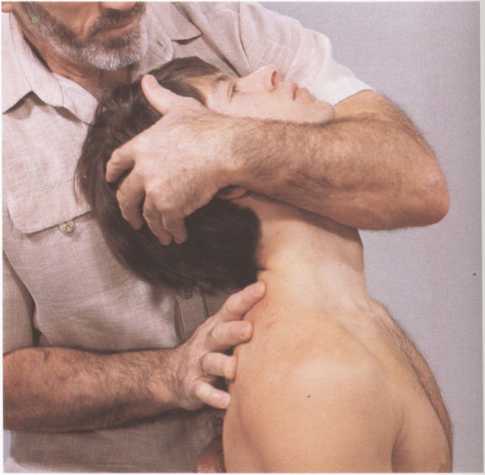52 (333)

3.5.4A.
Non-specific technique for the super-ficial ventral muscles to increase dorsal flexion (C2 and caudal ver-tebrae).
P sitting.



Starting Position: P: Sitting; upper thoracic region well supported. T: Standing facing P’s left side.
Grip: Ts left hand grips the right side of P’s head with P’s chin fixed in crook of Ts left elbow. P’s head is fixed firmly between T’s left hand and chest. T’s left palm cups comfortably over P’s right ear, with hand and arm positioned to avoid uncomfortable pressure on P’s mandible. T’s right hand stabilizes the upper thoracic region of P’s back.

Fig. 36 a. Starting Position.
Procedurę: Using this grip, T applies traction, and then maintaining this traction, moves his/her body to gradually and fully dorsally flex P’s cervical spine.
Stimulation of Antagonists: T retains grip, and asks P to look upwards and rearwards, and then move head and cervical spine in the direction just stretched. T resists that movement to stimulate P’s antagonists.
Notes: P’s thoracic spine can be morę easily stabilized by using a chair as a back support, which also stabilizes the sternum, clavicles and the first ribs.
Test for necessity of stretching the superficial ventral muscles: See if P has less cervical spine dorsal flexion with his/her mouth closed than with it open.

Fig. 36 b. Finał Position.
52
Wyszukiwarka
Podobne podstrony:
53 (315) 3.5.4B. Non-specific techniąue for the super-ficial ventral muscles to increase dorsal flex
56 (315) 3.5.5C. Non-specific technique for the deep ventral muscles to increase dorsal flexion
57 (308) 3.5.5D. Non-specific techniąue for the deep ventral muscles to increase dorsal flexion
54 (307) 3.5.5A. Non-specific technique for the deep ventral muscles to increase dorsal flexion
55 (318) 3.5.5B. Non-specific technique for the deep ventral muscles to increase dorsal flexion
58 (289) 3.6.1A. Non-specific techniąue to increase dorsal flexion with rotation and later-al flexio
64 (250) 3.7.1A. Non-specific technique to increase dorsal flexion with rotation to the right a
65 (245) 3.7.IB. Non-specific techniąue to increase dorsal flexion with rotation to the right a
66 (237) 3.7.1C. Non-specific techniąue to increase dorsal flexion with rotation to the right a
60 (278) 3.6.2A. Specific technique to increase dorsal flexion with rotation and lateral flex-ion to
61 (265) 3.6.2B. Specific techniąue to increase dorsal flexion with rotation and lateral flex-ion to
62 (263) 3.6.2C. Specific techniąue to increase dorsal flexion with rotation and lateral flex-ion to
63 (253) 3.6.2D. Specific technique to increase dorsal flexion with rotation and lateral flex-ion to
67 (234) 3.7.2A1. Specific technique to increase dorsal flexion with rotation to the right and
68 (230) 3.7.2A2. Specific techniąue to increase dorsal flexion with rotation to the right and
69 (224) 3.7.2B. Specific techniąue to increase dorsal flexion with rotation to the right and l
71 (223) 3.7.2D. Specific techniąue to increase dorsal flexion with rotation to the right and l
45 (421) 3.5.1. Non-specific techniąue to increase dorsal flexion. P supine. Starting Position: P: S
46 (412) 3.5.2A. Specific technique to increase dorsal flexion of the occiput on the atlas. P sittin
więcej podobnych podstron